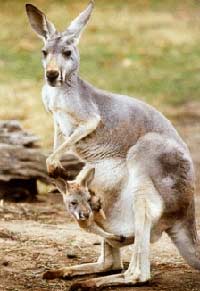 Unlike mammals that give birth to fully developed young, some marsupials tend to give birth to very underdeveloped offspring, which then must be nurtured for a period within a pouch located at the front of the mother’s abdomen. Besides serving as a “nest” for the young, does the pouch of marsupials have any other functions?
Unlike mammals that give birth to fully developed young, some marsupials tend to give birth to very underdeveloped offspring, which then must be nurtured for a period within a pouch located at the front of the mother’s abdomen. Besides serving as a “nest” for the young, does the pouch of marsupials have any other functions?
Professor Elizabeth Deane from Macquarie University in Sydney, Australia, conducted a study focused on the koala (pictured) and the small Tammar kangaroo around this topic, hoping to answer the question of how these tiny newborns can withstand diseases while their immune systems are still underdeveloped and how they can crawl from the mother’s reproductive tract into the pouch.
Professor Elizabeth Deane stated: “During non-breeding seasons, the pouch of marsupials is usually dry and brown. However, during breeding season, the pouches undergo a remarkable transformation, becoming unexpectedly clean and containing a translucent antibiotic compound. We know that when the young are born, they have almost no support in generating an immune response.
As a result, their ability to cope with diseases is very limited. However, the pouch of their mother is a protective factor for the young, as the mother secretes an antibiotic compound within her pouch. Natural survival instincts have helped the young know to crawl into their mother’s pouch to be safeguarded by this special antibiotic! ”.
NGUYỄN SINH

















































